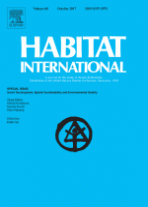From rivers to roads: Spatial mismatch and inequality of opportunity in urban labor markets of a megacity
Location decisions of firms and workers shape the spatial distribution of economic activity between and within cities. On one hand, the interaction between cities is widely investigated in the literature of regional and urban economics, which tries to assess the extent to which urban scale affects the local concentration of different skills, sectors, etc., apart from defining each city's role in the regional system. On the other hand, within-city dynamics and internal heterogeneity is the focus of urban labor economic theory, simultaneously analyzing the interaction of land/housing markets with the labor market (Zenou, 2009).










